Pico Tequilana: twinning Jalisco with Yorkshire
By Georgie CollinsIn a market ‘saturated’ with Tequila, English spirits producer Double Six Drinks and design agency OurCreative have joined heads to create and market a product with an ‘unexpected twist of Yorkshire grit’.
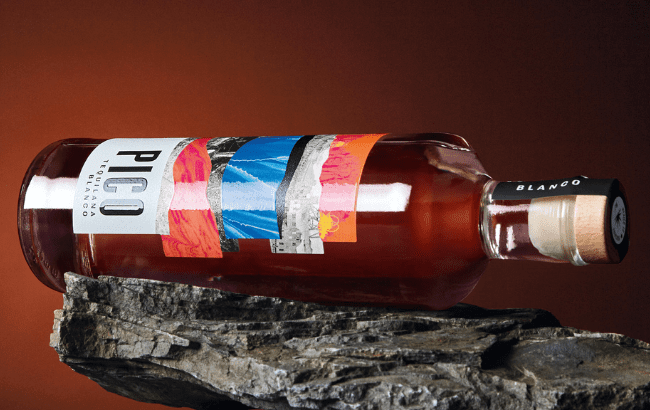
To be called a Tequila, a spirit must be made from at least 51% Blue agave, rest at an ABV between 35% and 55%, and be distilled and bottled in Mexico. As such, any brand that deviates from these rules is not allowed to call its spirit a Tequila. That is why Pico, a 38% ABV distillate made from Blue Weber agave in Jalisco, Mexico, doesn’t hold that moniker; it fails the criteria at the final hurdle: it is bottled in Leeds, England.
Speaking to The Spirits Business, Jody Monteith, brand director at Double Six Drinks, explains why, when it’s unable to meet the criteria for making Tequila, the company chose to turn to the Mexican agave category rather than opting for an agave sourced for another non-Tequila-producing region.
“We didn’t bring [Pico] to market just because we saw the world was going mad for agave,” he says. “Before I joined the business in January 2024, I sat with the founders, and they said: ‘Where do you want to take the business and the brands and the portfolio?’ The first thing I wanted to do was bring an agave to market because with the exception of Scotch whisky, I had spent most of my professional life in that category, through sales, advocacy and ambassadorial stuff.
“I’ve done lots of work with different brands, through Tequila and mezcal, predominantly, so I’m well aware of what exists within the broader category. My understanding of agave spirits stems from a first-hand knowledge that agave can be successfully grown in places such as South Africa, however I have spent time with the people in places such as Jalisco and Zacatecas, and that made the most sense. I’ve been to the places these spirits are made; I’ve met the people that make them.”
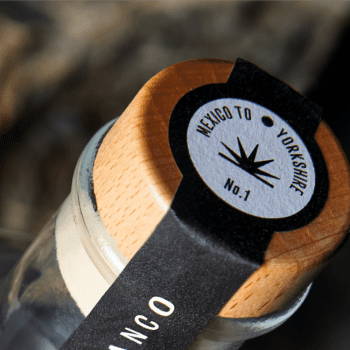
Monteith explains how he has previously worked on brands that have explored opportunities to bring agave spirits to the UK market, thus knowing what the options look like to bring liquid over in bulk. “It felt like a really obvious place for us to go, for a number of reasons because no one’s really doing it – not to the standard that I think we’re doing it to – and going down this route allowed us, in my opinion, to get a really great liquid at a really great price and then pass that forward.”
As it can’t be called a Tequila, the company is calling the spirit a ‘Tequilana’. “We could have named it an ‘agave spirit’, of course we could have, but the name Tequilana was always going to be the name, and that’s born from the fact that the agave plant used to make this is agave Tequilana.”
Monteith shares that in 2009 when he first travelled to Mexico, he spent a length of time in Guadalajara and exploring Jalisco, before travelling around the north and central regions of the country. “We went through Chihuahua, and we went to Michoacán and Sinaloa, and we went to Zacatecas and Guanajuato. And we explored all of these amazingly diverse regions of Mexico. And in a number of these places, what they do is they make Tequila in exactly the same way from exactly the same plant, but they are not the approved regions for producing Tequila, and therefore, in a lot of cases, the colloquial term used is ‘Tequilana’ because you give it the name of the name of the plant, and that’s it. So everyone knows what they’re drinking. It’s made in the same way, it’s made from the same plant, it tastes similar, but obviously the point of difference is exactly as it is in Scotch and English whisky, which is what side of the border you’re making it on, essentially, from region to region, as opposed to nation to nation. So that name always felt like the right name for us because it’s authentic.”
Monteith adds that the category name also references the potential for the company to tap into other regions.
“As much as we’re currently tapping into Jalisco-distilled blanco, we can and probably will at some point look at places like Zacatecas and Guanajuato and Durango, and these other places that are making phenomenal liquid for incredible prices, because they don’t carry the same name and terminology. And so that element of the name always was always going to be Tequilana – it made a lot of sense,” Monteith says.
Not bound by clichés
By choosing to lean into the fact the brand cannot be labelled a Tequila, Monteith says the company has been able to take advantage of logistical elements that it would have otherwise been disqualified from using, which in turn has had positive sustainability consequences, too.
“We’re not bound by cliché or faux tradition. Pico is a delicious, modern, fresh approach to furthering the agave spirit category,” he says.
He clarifies: “So first and foremost, the minute [the spirit] leaves Mexico in a vessel larger than one-litre, it ceases to be Tequila. Obviously, it’s produced in a Tequila-producing region, it leaves at 55% ABV, which is the threshold at which you can export it. But it’s really the vessel primarily that stops this being Tequila first and foremost, despite everything we then do to it after that.
“Our chosen process removes nearly 1,000 glass bottles for each IBC [intermediate bulk container] we import. That equates to 500kg less glass being produced and subsequently shipped 5,500 miles across the Atlantic. As a result, every bottle or eco-pack of Pico we produce has a significantly lower carbon footprint and reduces packaging waste compared to a traditional alternative.
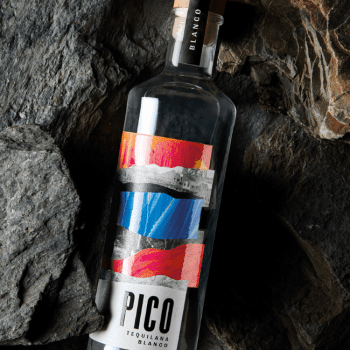
“The fact that we also bottle and pack without the ‘Tequila’ moniker means we are free to package Pico in 10-litre eco-pack or BIB [bag in box] units. This offers additional carbon emissions savings due to reduced weight, but also nets the cost down and makes Pico not only look, feel and taste great, but hit the shelf at an incredibly competitive price point.
“We have very much embraced the opportunity to bring something to market that was not going to be labelled as Tequila, despite the fact that that’s how it’s produced. We’re not making any apologies at any point on this. We don’t go to any pitches of tenders and say, ‘this isn’t Tequila, but’ – that’s never the way we sell the product. And we really take ownership of the fact that this liquid does start as Tequila, but it’s the way in which we then bring it to Leeds, the way in which we then finish, the way in which we package it, that stops it being that. And I think that’s a really positive thing, because there’s huge advantages that can be made from doing it in that way.”
Double Six Drinks gradually brings the strength of the exported liquid down to 38% ABV with Yorkshire water.
“Our process of dilution is really slow – we bring it down from 55% to 38% over a matter of weeks – really softly, really slowly. We land at 38% because it’s the right profile. It gives it the right flavour profile from us. It also helps in pricing, because it means we can get it to market at the best possible price,” Monteith explains.
The result is a liquid with a very classic blanco character, with green and vegetal notes, and some spice. “The reduction with our Yorkshire water and the slow process gives it additional mouth feel,” Monteith adds. “We end up with this creamy quality in terms of mouth feel and texture. But we’ve also got this really lovely almost green fruit character, which develops at the back of the vegetal elements. People often reference things like green apple when tasting it. It’s got a white chocolate kind of creamy quality, and that is derived, in my opinion, from the kind of vegetal backbone of the 55% ABV spirit.”
Going forward, there are additional creative opportunities available to the brand, with plenty of scope for experimentation with ageing without the boundaries that are in place for established categories.
“I think one of the first things we’ll probably look to do, and we’ve started to kind of throw ideas around, will be exploring things like wood types for ageing our Tequilana that you can’t use in traditional ageing processes. I know those rules have been relaxed somewhat in recent years, but there’s still certain restrictions, so that might be something we look to explore. Nothing is stopping us. We haven’t done it yet, but we have had people come to us that work with to ask ‘would you consider this?’ The timeline on that might be around the tail end of next year, potentially, but there’s nothing to stop us essentially doing anything we want to.”
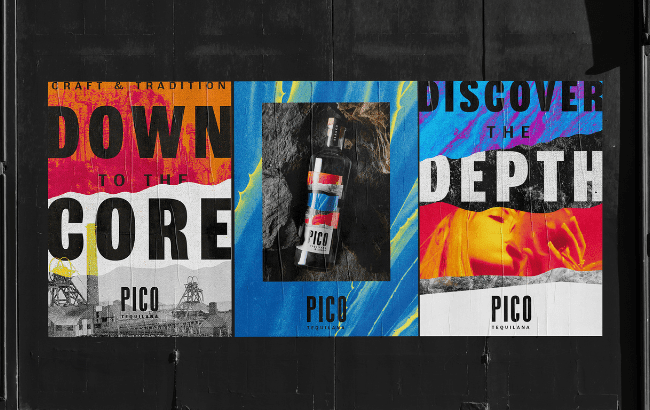
Mexico meets Yorkshire
To bring Pico to life and ensure the outward presentation of the brand respectfully and authentically integrates the liquid’s Mexican heritage with its Yorkshire influence, Double Six Drinks enlisted the expertise of Leeds-based design agency OurCreative.
Design director Joe Wallis explains that from the start, one of the main challenges for developing the branding for the spirit was to merge the two regions represented in the liquid respectfully.
“The main challenge was avoiding clichés. We didn’t want to just throw a load of clichéd Mexican and Yorkshire references out there, like maracas and Whippets. We wanted to do something that felt fresh and contemporary while still being rooted in that heritage and tradition,” Wallis says.
As such, the agency focused on creating a brand with genuine, meaningful connections that weren’t shoehorned into a forced narrative, avoiding overt cultural stereotypes as a rule.
Wallis continued: “We explored the different links between Mexico and Yorkshire, and one of the links that we all really liked was the mining heritage of both the Central American regions, which have deep silver mining heritage, and then you’ve obviously got the Yorkshire collieries. It’s something that’s embedded in both histories, and it didn’t feel forced. It felt like it was a really beautiful part of Yorkshire history that is very ingrained in a lot of people that still live here, and it felt like a much more natural way to link the two regions together without it feeling forced or clichéd.”
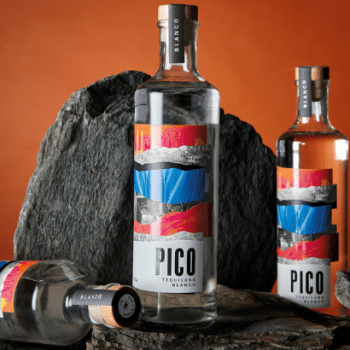
Every part of Pico’s brand identity reflects this cultural interplay, including the name Pico, which was inspired by the Mexican term for a pick-axe, and was found, Wallis says, in a 120-year-old Spanish mining terms dictionary.
“It felt also like a term that different people could take ownership of in different ways,” Monteith adds, “because it means different things to different people and different dialects regionally. We like the ambiguity of it in a lot of respects, as well.
“I think one of the first things we said at the start of this process was we didn’t want any ‘Spanglish’, because there’s been a lot of brands brought to market in the last couple of years that seem to kind of really lean into the kind of faux heritage side of it. And I think this name just allowed us to bring something really authentic to the brand.”
Alyssia Taylor, senior account manager at OurCreative, adds: “From a consumer perspective as well, if you see it behind a bar, it’s a nice, easy word to say, especially if you’ve had a couple of drinks. It’s easily recognisable, and not a term that felt ingenuine, or maybe that we were trying to portray it as being something that it wasn’t.”
Multi-layered approach
Wallis explains the approach they took to the design was to create a collage that blends the combined mining heritage via beautiful contemporary illustrations, with both agave leaves and stone textures alongside archival imagery of people down in the pits in the Jalisco mines or the Yorkshire colliery mines. “The layering up of these elements represents the stratigraphy and rock formations [found in mining pits]. It’s almost like unveiling the layers as you go down the levels. So it’s just got a really nice, natural piece of storytelling,” he says. This approach, he adds, allowed them to lean into and embrace the contrasts between the regions, therefore “creating something that’s really striking”.
Much like Double Six Drinks being freed from the constraints associated with Tequila’s rules and regulations, OurCreative found itself with an additional sense of design freedom.
Taylor says: “Normally what we would do before we receive a creative brief is we’ll do a bit of a deep dive into what’s already happening in the market. So we sat there with all of our research on Tequilas, on agave, on mezcal, and then we were told it was going to be a Tequilana. And we were like, ‘oh, OK, so this is exciting’. It kind of freed us from a lot of the category codes that already exist, which, from a brief perspective, makes it super exciting.”
Related news
Australian agave spirits brand Beudi launches
